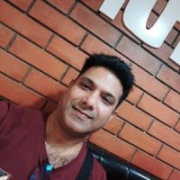

Fedora Linux and QNX Neutrino are competing in the realm of operating systems. Fedora Linux typically has the upper hand due to its cost-effectiveness and community support, while QNX Neutrino stands out in embedded systems with its superior reliability and performance.
Features: Fedora Linux offers customizability, a rich package repository, and strong security measures, making it suitable for diverse environments. QNX Neutrino focuses on real-time performance, stability, and is widely used in mission-critical systems, targeting embedded applications.
Ease of Deployment and Customer Service: Fedora Linux is straightforward to deploy with extensive documentation and community support, easing access across environments. QNX Neutrino requires specialized deployment but offers professional-grade support for niche industries, providing tailored services.
Pricing and ROI: Fedora Linux usually involves lower setup costs due to its free open-source nature, which contributes to a higher ROI for general purposes. QNX Neutrino has higher initial costs but offers significant ROI in specialized sectors through its reliability and performance.

Fedora Linux is a versatile and powerful operating system, highly regarded by a broad spectrum of users. Its performance as a development platform is frequently lauded, offering a robust environment suited for programming in various languages and frameworks, thanks to the latest tools and technologies. Fedora Linux is commonly used in educational settings, where it supports students and instructors alike in programming and system administration. Organizations have found that adopting Fedora Linux significantly enhances efficiency and productivity. It streamlines workflows, fosters better collaboration among team members, and even reduces operational costs. The insights provided by Fedora's tools facilitate improved decision-making, altogether elevating businesses' operational capabilities and financial outcomes.
QNX Neutrino, a real-time operating system from BlackBerry, delivers robust performance for embedded systems across industries like automotive, aerospace, and telecommunications.
QNX Neutrino is designed for high-performance embedded applications, providing deterministic responses that are essential in systems where timing is critical. Its microkernel architecture ensures maximum security and reliability, making it a trusted choice for developing safety-critical applications. QNX Neutrino's ability to support multitasking and asymmetrical processing adds flexibility, supporting resource utilization across different hardware environments.
What are the key features of QNX Neutrino?
What benefits should users look for in reviews?
In industries like automotive, QNX Neutrino powers complex systems such as Advanced Driver Assistance Systems, ensuring real-time data processing for enhanced safety. In aerospace, it supports flight control systems where reliability and timing precision are crucial. Telecommunications benefit from its scalability and fault resilience, enabling robust network infrastructure.
We monitor all Operating Systems (OS) for Business reviews to prevent fraudulent reviews and keep review quality high. We do not post reviews by company employees or direct competitors. We validate each review for authenticity via cross-reference with LinkedIn, and personal follow-up with the reviewer when necessary.